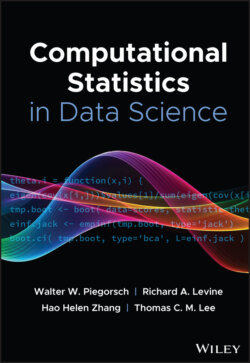Читать книгу Computational Statistics in Data Science - Группа авторов - Страница 71
1 Introduction
ОглавлениеMany models in the field of machine learning, such as deep neural networks (DNNs) and graphical models, are naturally represented in a layered network structure. The more layers we use in such models, the more complex the functions that are able to be represented. However, models with many layers are difficult to estimate optimally, and thus those in the machine learning field have generally opted to restrict their model to fewer layers, trading model expressivity for simplicity [1]. Deep learning explores ways to effectively train models with many hidden layers in order to retain the model's expressive powers. One of the most effective approaches to deep learning has been proposed by Hinton and Salakhutdinov [2]. Traditionally, estimating the parameters of network‐based models involves an iterative algorithm with the initial parameters being randomly chosen. Hinton's proposed method involves pretraining, or deliberately presetting in an effective manner, the parameters of the model as opposed to randomly initializing them. In this chapter, we review the architectures and properties of DNNs and discuss their applications.
We first briefly discuss the general machine learning framework and basic machine learning methodology in Section 2. We then discuss feedforward neural networks and backpropagation in Section 3. In Section 4, we explore convolutional neural networks (CNNs), the type of architectures that are usually used in computer vision. In Section 5, we discuss autoencoders, the unsupervised learning models that learn latent features without labels. In Section 6, we discuss recurrent neural networks (RNNs), which can handle sequence data.
